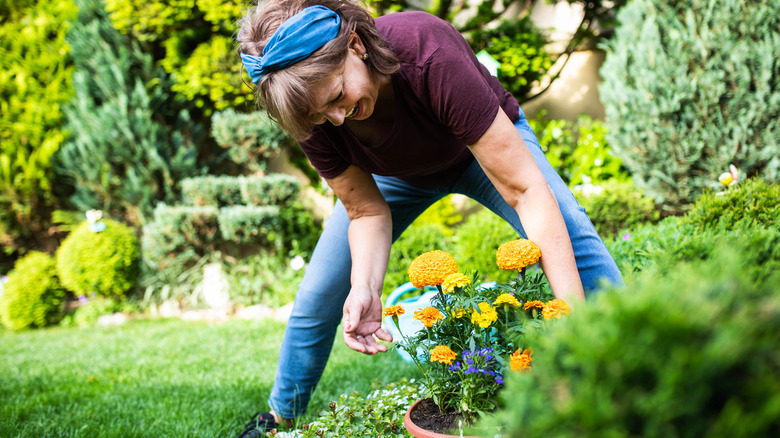Marigolds are dazzling flowers known for their fiery spherical blooms. They’re easy to grow and require very little care once their growing conditions are met. So, when these beginner-friendly flowers fail to blossom, it can leave a new gardener feeling defeated. Thankfully, you don’t need to be an expert botanist to figure out what to do if your marigolds aren’t blooming. Once you diagnose the reason for the lack of growth, you can correct the issue with little effort and enjoy a thriving marigold display.
The first step to getting your garden back on track is to take a good look at your flowers. Common problems like vitamin deficiency are easy to spot once you know the tell-tale signs. A lack of phosphorous will present as red or purple spots on leaves or as entirely pale leaves. Pests, on the other hand, will leave holes in leaves, petals, stems, and roots. Identifying the issue is the only sure way to fix it.
Ensure your marigolds are getting enough nutrients

Marigolds are not fickle flowers, but they do have specific requirements for sunlight, fertilizer, and water. Your marigolds will thrive if they are planted in the right spot, get enough hydration, and are provided with appropriate levels of nitrogen, phosphorous, and potassium (NPK). First, determine how much sunlight your marigolds receive. They thrive with at least six hours of direct sunlight. If they are in a shaded area, relocate them to an open spot with plenty of sun exposure.
After planting, add an all-purpose fertilizer to give your marigolds the nutrients they need. Aim for a mix that has an even ratio of nitrogen, phosphorous, and potassium. Unlike other flowers, marigolds are low-feeders and do not require routine fertilization. However, they do need to be watered at least once a week once they begin to grow. Keep in mind that outdoor temperatures can influence the amount of water your flowers require.
Keep the pests away

As new gardeners will discover, sometimes you can do everything right and your flowers will still fail to bloom. Often, this is the work of pests like Japanese beetles. Many types of pests enjoy feasting on various parts of marigolds. Common plant illnesses like root rot and mold also impact growth and contribute to poor flower health. Flowers with root rot will have reddish-brown roots, a foul smell, and yellowing, misshapen leaves. Identifying pests takes some detective work, but different species of insects and mammals leave specific damage in their wake.
Once you have identified what type of pests are affecting your garden, it becomes easier to drive them away. For instance, you can make a DIY garlic concoction to keep Japanese beetles from munching on your marigolds. For slugs and snails, you can buy bait and insecticide at a local garden store. Or, if you prefer a natural method, you can encourage birds to visit your garden. Birdhouses, bird baths, and seed feeders will attract birds that will control the slug and snail populations. Sprinkling eggshells is another natural method that will deter these tiny intruders.



